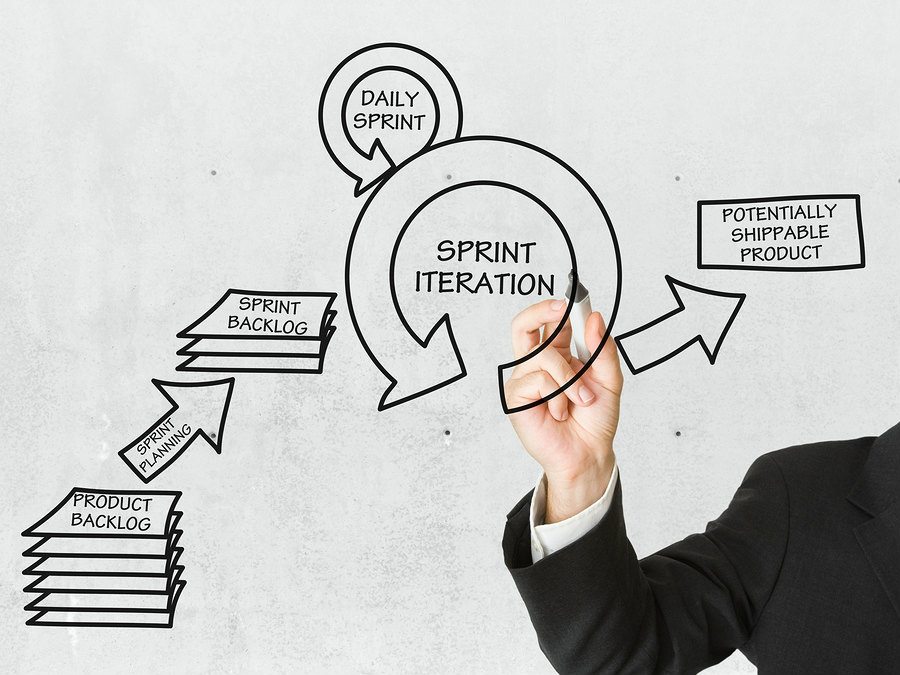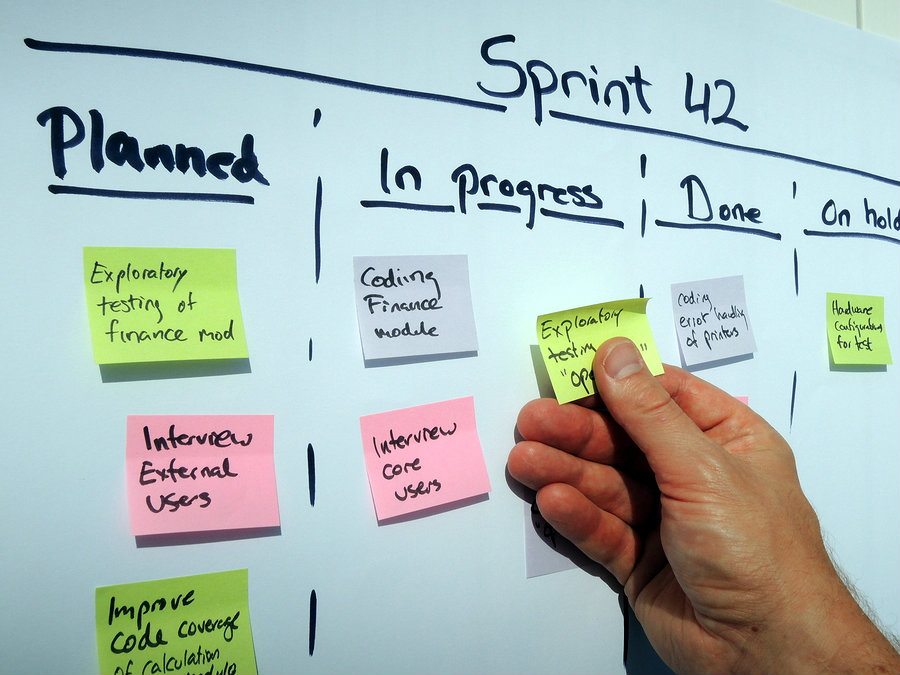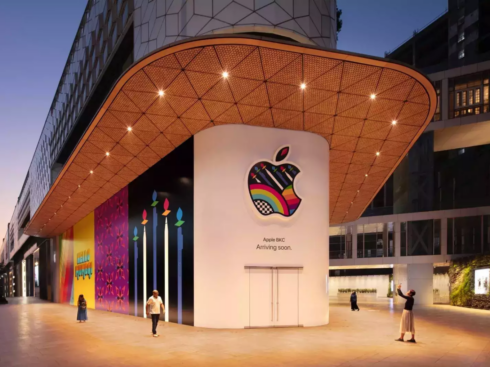[Proto.io is a mobile app prototyping tool used by entrepreneurs and startups to create fully-interactive realistic prototypes that look and feel like real apps.]
Workflow management is crucial to designing an app that meets the user’s needs while showing off the skill of your design and dev team, making your business look good. But with so much project management software for designers, developers and entrepreneurs out there, how do you know what’s right for your particular team or agency? Before diving into capital investments, it’s crucial to get a sense of your own needs as a mobile app creator, as well as those of your colleagues.

As with our list of top UX design tools no mobile app designer should be without, many of these workflow management tools might come as a surprise — it isn’t all about software! Whether you’re flying solo or part of an agency, these four tools are necessary to get everyone on the same page, streamlining your process while making the end product more beautiful:
A coherent project management methodology.

Are you a Scrum shop, or are you all about Kanban? Are you more Agile than Lean, or some combination of both? Regardless of your project management methodology, there’s a tool for you to create projects and tasks, prioritize them, assign designers, developers, testers and other team members to the projects, monitor deadlines and track client feedback — among other things.
Already overwhelmed? First, let’s take a look at your methodology. If you were lost on that last paragraph, we’ll bring you up to speed.
Philosophies of Project Management Software for Designers and Developers
We get it: methodologies aren’t workflow management tools in the same sense a piece of software or even a whiteboard might be. However, they are indispensable frameworks for organizing your projects, getting your team on the same page and determining how you’ll turn a great idea into an even greater mobile app.
Plus, you can’t go shopping until you have a list in mind, and the task management tools available for mobile app teams tend to be based on these pre-established methodologies. Before choosing task and project management software for designers, developers and managers, it’s crucial that you determine what framework you want to use to run your project. This will vary based on your project needs, client needs, team culture and personal project management philosophy (yup — we’re asking you to dig deep here!).
Agile Project Management
What began as a manifesto about project management is now an umbrella for more specific frameworks based on the Agile philosophy, like Scrum. In 2001, a group of developers came up with the Agile Manifesto, which is a bit like software development’s answer to Martin Luther’s 95 Theses — except instead of challenging a church, the Agile Manifesto went against the Waterfall methodology, once the bell of the project management ball.
Don’t Go Chasing Waterfalls

So what was so wrong with Waterfall project management that brought Agile into existence? As with anything in tech, it mostly had to do with use case, and Waterfall just wasn’t, well, agile enough for most software dev projects. Waterfall-style management is a very linear, sequential process, with rigid project phases (gathering requirements, designing, implementing, testing and maintaining) and ample documentation.
Seriously, tons of documentation. While the “Waterfall” methodology is so named because progress on the project is thought to flow down through each phase, it can feel like you’re literally drowning under a waterfall of project documentation.
While perhaps a boon for tech writers, Waterfall wasn’t a great fit for software developers or their managers, who found that project needs were sometimes difficult to predict at the beginning of the engagement, and that the rigid structure made the improvisation and flexibility necessary for successful software development difficult to execute. As a result, the process took too long, client needs weren’t being addressed and communication was strained, all at the expense of the final product. (Except for the documentation — the documentation was on point.)
The Agile manifesto replaced this rigid structure with one with more emphasis on people than on processes and “working software” than on documentation (for example, rapidly creating an interactive prototype instead of creating densely annotated flat wireframes). In essence, Waterfall wasn’t quick or flexible enough to meet modern demands for software and app development, and Agile superceded it.
Lean Project Management
Similar to Agile in its purpose — making the project lifecycle more efficient and easy to manage — but different in its implementation is Lean. Often thought of as more of a manufacturing project management style, especially when associated with Toyota’s production in the late eighties, Lean management and its principles have also caught on in the tech world.
According to the Lean Enterprise Institute, the foundation of lean management is “to maximize customer value while minimizing waste,” and Lean accomplishes this through five main principles: identifying the value of the end product to the customer, mapping out the steps leading to that product and eliminating any step that doesn’t add value, maximizing the flow of those steps, establishing pull (assessing customer demand and feedback) and refining the process until it is “perfect” — i.e., maximum value, with no waste.
To help project managers implement the Lean and Agile methodologies, a few more specific frameworks have evolved to make their principles more concrete.
Scrum and Kanban – Finding the Right Workflow Management Tools for Your Shop

Under the Agile and Lean umbrellas are a few more specific project management methodologies, each with a host of workflow management tools to help you run a tighter ship. Two of the most popular in mobile app development are Scrum and Kanban. You might find that your projects and management style suit one over the other, or incorporate elements of both:
Scrum is perhaps the most well-known and widely used Agile project management methodology, and an instant classic in software dev shops. Again, it’s an iterative process — meaning instead of having one sequence of rigid phases like Waterfall, Scrum takes you through the planning, building, testing and review process as many times as the product deems necessary.
For example, you might quickly concept an app, rapidly build an interactive prototype of the app, test a beta of the app and then go back to concepting and prototyping to get the finished product perfect. Each pass through this process is called a sprint, and each sprint has a project backlog and a set of user stories (“As a user, I need X to achieve Y”) until the final product is ready to ship out.
Kanban is another popular project management methodology, this time under the Lean umbrella. Developed in Japan by Toyota (again, there are plenty of similarities between designing cars and mobile apps), Kanban organizes your projects by what phase they’re in using visual cues. You determine the steps necessary to complete the project (again, eliminating anything not absolutely necessary), then place each step into a phase column (for example, “backlog,” “in progress” and “complete”). This lets you easily see where each project stands, and where bottlenecks may be occurring.
Scrumban is a combination of Scrum and Kanban, and a great way to make sure that your process isn’t just lean, but also flexible and adaptive. By adding the top-down visibility and downstream “pull” demand of Lean/Kanban to Scrum’s processes (sprints, backlogs and user stories), your team can benefit from the strengths of both workflow management tools.
Software tools to oversee the project
Now that you’ve thought a bit about what type of framework you want to apply to your management style, you can take off the philosophy hat and put on the purchasing hat. While in the eighties, you might have had to create your own Kanban board using tape and actual notecards, there is now an abundance of project management software suites for designers using principles of Scrum, Kanban or Scrumban. Here are our two favorites:
Basecamp is one of the most popular workflow management tools in part because of the robustness of its feature set — it allows you not only to organize projects into different phases and steps, but also to communicate directly with your team members, store files and receive notifications when things are due (and turn off those notifications during the weekend and days off, for work-life balance).
While not strictly a Scrum tool, Basecamp utilizes Agile management principles and maps nicely to Scrum processes. Because it contains so many different utilities (many of which we’ll address later in the article), it’s a good choice if you want to minimize the number of tools you’re using and invest in a full project management suite.
Trello is another one of the more widely used Agile-based workflow management tools, but unlike Basecamp, it’s more focused on task management, with a mix of Scrum-based team roles and Kanban-based visual boards. If you’re strictly looking for a way to organize your projects, Trello is an excellent option — plus, as shown on its website, Trello is just as well suited to household projects like redesigning your kitchen or even planning a wedding as it is for managing work projects. Try it for personal use (it’s free!), and if you love it, upgrade to Business Class to share with your team.
There are many more project management tools for designers and developers, some geared more toward Scrum, some toward Kanban and some toward Scrumban. (We’d love to know what your favorites are — tweet us @Protoio to share your favorite Agile or Lean tool, and what makes it so stellar!)
Messaging tools designed with business in mind

Between email and project management suites, you have many options to communicate with your team. If you work in an office, you can always just stroll up to your designer or developer’s desk and start a conversation, or gather everyone around a whiteboard. However, whether you’re working remote or in a single location, sometimes you don’t have the opportunity to leave your desk, but need to touch base with your team in real-time.
Instant messaging isn’t new to the business world, but using it in a business-friendly way can be a challenge. Using tools you already use for communicating outside of the office, like Facebook Messenger or Google Chat, can be convenient. However, it can also sink your team’s productivity as they filter (or fail to filter) business messages from stream-of-consciousness chats with friends and family members. Additionally, it can be all too easy to ignore notifications on either platform, so you might miss an important update from one of your colleagues.
The best messaging tools for your agency are work-specific — meaning, an important update from the testing and QA team isn’t mixed up with your grandmother’s apple crisp recipe or a bad pun from your uncle — and capable of siloing your conversations by project and team.
At Proto.io, we’re big fans of Slack as an instant messaging and collaboration solution. What’s great about Slack is that not only can you create “Private Channels” for chats among specific project teams, but you can also create open Channels visible to everyone in your organization, organized with hashtags. Then, just like on social media, you can view a chat stream focused on a specific topic (for example, “#marketing,” “#golfouting,” “#IT-issues,” etc.).
And, as with any other instant messaging tool, you can send direct messages with Slack, so you can have a one-on-one chat with the lead designer on one of your projects (or ask Stacy from Accounting for the recipe for those cookies she brought in today).
Rapid prototyping optimized for collaboration.
Whether you’re an Agile or Lean shop (or some combination thereof), rapid prototyping is an important way to eliminate waste from your process. Not only do interactive prototypes deliver great ROI in terms of courting potential contracts and serving as highly engaging rich media content for your digital marketing materials, but they also cut down on the time spent in the development phase of your process while giving you a quick way to update your design based on client feedback.
Using a tool like Proto.io allows you to create stunning, lifelike digital prototypes of your mobile app complete with animations and interactions — so it feels more like the final product (check out these interactive prototype demos if you’re not convinced!). Better yet, Proto.io is optimized for collaboration, making it one of your most important workflow management tools.
One of the biggest headaches any project manager has to deal with is gathering and organizing client feedback, making sure that all needs are spoken for in the final product. Too often, this means searching your inbox for a message you could have sworn you had read, only to find it hours later buried deep in a long email chain.
With Proto.io, all feedback from the team, beta testers or clients (you can invite as many collaborators as you wish) is organized right within the app, making collaboration a cinch. This both saves time and ensures the customer or beta user gets maximum value, making it the perfect addition to your Lean management toolkit.
What Are Your Favorite Workflow Management Tools?
There are almost as many project management tools for designers as there are design teams, and the ones that work best for your particular set of skills, work styles and ethos might differ from those that keep another firm lean and agile.
What are your favorite tools? What software can you absolutely not live without? Let us know by tweeting us @Protoio!
[Proto.io is a mobile app prototyping tool used by entrepreneurs and startups to create fully-interactive realistic prototypes that look and feel like real apps.]



























